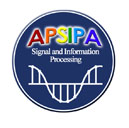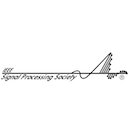Tutorial and Workshop (12 Dec. 2017)
Five half-day tutorials and one workshop will be conducted at APSIPA ASC 2017. These tutorials and workshop are conducted in parallel. No additional charge for registered conference participants (both full and student). The tentative schedule is as follows:
1. Sequential Decision Making: Theories and Applications
by Yan Chen, University of Electronic Science and Technology of China and
Chih-Yu Wang, Academia Sinica


Area: Wireless Communications and Networking, Social Network
Keywords: Sequential decision making, game theory, social learning, network externality, social networks, wireless communications and networking, Chinese Restaurant Game
Abstract:
Traditionally, the network and system management problem is formulated as an optimization problem with the assumption that all inputs are given at first and the decisions are made at a given time simultaneously. However, such an assumption is not realistic in many real world problems. Sequential decision making, a more general decision structure, exists commonly in our daily life, such as answer or vote on Q&A sites, tweets and comments on Twitter, access point association in wireless communications, channel access in cognitive radio networks, and so on. These examples share several characteristics: information asymmetry, network externality, and decision dependence. Such characteristics are the keys to understand how agents may behave under certain decision structure. Existing simultaneous decision making models cannot capture these key characteristics and therefore lead to inaccurate prediction or inefficient configuration, eventually degrade the system performance. In this tutorial, we present a series of game-theoretic frameworks to analyze and manage how rational users make sequential decisions with asymmetric information under different settings. We will provide in-depth theoretic analysis and share our experience in data-driven experimental results on various applications.
2. 3D Video Processing for AR/VR Contents Generation
by Yo-Sung Ho, Gwangju Institute of Science and Technology, Korea

Area: Video Communications and Coding, AR/VR
Keywords: 3D video, AR/VR, immersive media, 360 degree video
Abstract:
With the emerging market of AR/VR imaging products, 3D video has become an active area of research and development in recent years. 3D video is the key to provide more realistic and immersive perceptual experiences than the existing 2D counterpart. There are many applications of 3D video, such as 3D movie and 3DTV, which are considered the main drive of the next-generation technical revolution. Stereoscopic display is the current mainstream technology for 3DTV, while auto-stereoscopic display is a more promising solution that requires more research endeavors to resolve the associated technical difficulties. In this tutorial lecture, we are going to cover the current state-of- the-art technologies of 3D video capturing and processing for AR/VR applications. After defining the basic requirements for 3D realistic multimedia services, we will cover various multi-modal immersive media processing techniques for immersive 360 degree video applications.
3. Basics of compressed sensing
by Prof. Mrityunjoy Chakraborty,
Department of Electronics and Electrical Communication Engg., Indian Institute of Technology (IIT), Kharagpur, India.

Area: Compressive Sensing
Keywords: K-sparse, restricted isometry, L_1 norm, matching pursuit, subspace pursuit, basis pursuit, LASSO, group sparse, co-sparsity
Abstract:
Compressive sensing (CS) is a powerful technique to represent signals at a sub- Nyquist sampling rate while retaining the capacity of perfect (or near perfect) reconstruction of the signal, provided the signal is known to be sparse in some domain. In last few years, the CS technique has attracted considerable attention from across a wide array of fields like applied mathematics, statistics, and engineering, including signal processing areas like MR imaging, speech processing, analog to digital conversion etc. The framework of CS essentially leads to finding sparsest solution to a set of under-determined linear equations, say, y = A x where A is a M · N sensing matrix with M<<N, x is an unknown, sparse vector and y is a measurement vector. The ideal approach to this is based on minimization of the l_0 norm of x , i.e., || x ||_0 subject to y = A x . This, however, is non-convex and is NP hard. In CS, the above l_0 norm can, however, be replaced by the l_1 norm || x ||_1 by imposing certain constraints on A in the context of the so-called restricted isometric property (RIP). This then results in several convex relaxation based recovery algorithms that evaluate the sparsest x , like basis pursuit, LASSO, basis pursuit denoising etc. Separately, several greedy recovery algorithms have been proposed like the orthogonal matching pursuit (OMP), compressive sampling matching pursuit (CoSaMP), subspace pursuit, iterative hard thresholding etc which too exploit the RIP conditions on A and determine the sparsest x iteratively. Recently, the notion of sparsity has further been extended to group sparsity and co-sparsity. In this tutorial, we will provide an introduction to CS, focusing mostly on the recovery algorithms. No background knowledge will be assumed on part of the audience (except for basic matrix-vector algebra) and relevant vector space concepts will be developed in the beginning of the tutorial. The tutorial is intended mostly for those who find CS useful in their areas of research, but are not initiated to this.
4. Spoofing Attack of Speaker Recognition
by Prof. Hemant A. Patil, Ms. Madhu R. Kamble,
Speech Research Lab, DhirubhaiAmbani, Institute of Information and Communication Technology (DA-IICT), Gandhinagar, Gujarat, India and
Prof. Haizhou Li,
Department of Electrical an Computer Engineering, Department of Mechanical Engineering, National University of Singapore, Institute for Infocomm Research, Agency for Science, Technology and Research, Singapore.



Abstract:
Speech is most powerful form of communication between humans and it carries various levels of information such as linguistic content, emotion, acoustic environment, language, speaker’s identity and health conditions, etc. Speaker recognition deals with the identification of speaker’s identity with the help of machines. There are various research issues in speaker recognition such as variability in speaker microphone, intersession, acoustic noise, etc. In addition, one of the most challenging but practical research issue in this area is analysis of spoofing attacks and development of various countermeasures to alleviate such possible attacks. In this one day tutorial, we will present analysis of various spoofing attacks for voice biometrics. In particular, we will present work related to technological challenges voice conversion (VC), speech synthesis (SS), replay, twins and professional mimics. This tutorial presents in a coherent way following aspects.
- Introduction to Voice Biometrics
- Research issues in Voice Biometrics
- Various Types of Spoofing Attacks
- Spectrographic Analysis of Natural vs. Spoofed Speech: VC, SS, Replay, Mimicry, Twins.
- Relevant literature search
- Standard/Internationally Well Known Spoofing Databases :
- ASV Spoof 2015 Database
- AV Spoof Database
- ASV Spoof 2017
- Spoof Detection System: Features pattern classifiers, databases, performance measures
- Countermeasures: Spectral features, excitation source features, deep learning features
- Future Research Directions and Roadmap Ahead
5. Network Metrics and Measurements in the Era of the Digital Economies
by Dr. Pavel Loskot, Senior Lecturer,
College of Engineering, Bay Campus, Swansea University, United Kingdom

Area & Keywords: metrics, measurements, key performance indicators, service level agreements, best practices, standardization, data processing, machine learning, network engineering
Abstract:
This tutorial focuses on the metrics and measurements for heterogeneous telecommunication networks which are the backbone of the emerging cyber-physical systems. The metrics and measurements play a vital role in the whole life-cycle of these networks, from their planning, design, deployment, operation, and decommissioning. Our aim is to offer understanding how the metrics are created, selected, standardized and categorized. We will point out how the metrics evolve, and are bundled to match the ever increasing complexity of telecommunication networks which usually creates many challenging trade-offs. We will explain how the measurement procedures and conditions affect the metric values. We will also expose how telecommunication stakeholders have different spatio-temporal perceptions of the network, so they often adopt different metrics and measurement strategies. The background knowledge on metrics and measurements can be exploited to lay out more mathematical foundations of the subject which is the main emphasis of this tutorial. Mathematical models of the heterogeneous telecommunication networks will be introduced first. The metrics and measurements are reconsidered as the problems of system sensing and data or signal processing, respectively. Several optimality criteria are defined to obtain the metrics for given constraints and the application considered. The generality of metrics and measurements against their optimality is then discussed. Finally, the metrics utilizing the machine learned features are explored to support the development of self-configured intelligent systems. The discussions involve exposure to essential modeling and signal processing tools including statistical inference, network science, compressive sensing, sensitivity analysis and machine learning. In the last part, the metrics and measurements developed for telecommunication systems are explored in a wider context of cyber-physical systems such as smart grids, transportation and logistics networks. The metrics for the underlying telecommunication network are reexamined for the scenarios when the primary objective is the function and performance of the digitalized physical system.
6.Hands-on Workshop: Automating Measurements and Signal Processing with LabVIEW Graphical Programming and Modular Data Acquisition Hardware
by Wu Rong,
Marketing Engineer, National Instruments

Abstract:
During this workshop, National Instruments (NI) engineers will guide you through hands-on exercises designed to help you create a measurement application for acquiring, viewing, and storing measurement data using NI LabVIEW system engineering software and NI CompactDAQ modular data acquisition hardware. Explore key system configuration steps, build example DAQ applications, and familiarize yourself with automating measurement acquisition and signal processing.
















